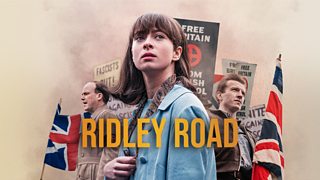The Real Ridley Road
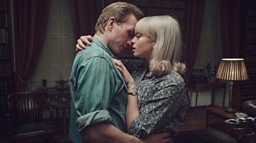
By author Jo Bloom
Ridley Road is set against the fascist revival in 1960s London and the Jewish men and women who fought against it. Although this is a fictional story it’s based on the accounts of real people and inspired by real events.
Jo Bloom, the author of the book on which the show is based, tells us about her personal interest in this relatively unknown part of history and how fact and fiction meet in Ridley Road.
-
![]()
Watch on iPlayer
Watch the entire series of Ridley Road on 大象传媒 iPlayer now.
At a funeral in the summer of 2008, I overheard my dad and a WWII veteran and anti-fascist swap stories about their experience of antisemitism in post-war east London. Talk turned to the 43 and 62 Groups, two Jewish defence organisations who fought fascists on the streets and infiltrated far-right organisations. I listened in disbelief; how had I not known about the Jewish community's street resistance to fascism?
I knew my heart lay in writing about the 62 Group
The veteran had been a runner for the prominent 43 Group – the thousands of men and women who had successfully confronted fascism directly after WWII and made it impossible for the fascists to hold meetings without serious street opposition. But by the time I boarded a train back to Hove, I knew my heart lay in writing about the 62 Group, a coalition of Jewish people driven to defend themselves against the fascists' second attempt to organise after the war. Formed in 1962, it was effectively the successor organisation to the 43 Group.
What a rich landscape to set a story against! In 1962, the sense of changing times was palpable. The rock 'n' roll era was ending and would soon usher in the Swinging Sixties. At the same time, the fascists had re-emerged after a quiet spell, opposing non-white immigration and playing a key role in the 1958 Notting Hill race riots. Yet antisemitism was still at the core of the fascists' beliefs. It was still rife.
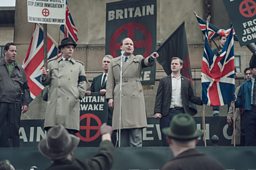
So, I had two parts of a story. On the one hand, the coffee bars, clubs and dancing, changing hairstyles and fashions. On the other, the antisemitism, hatred, street fighting and bitter conflict. But where to start? It was a story inspired by true events, yet research threw up nothing on the 62 Group.
It was a story inspired by true events
Luck arrived in the form of Steve Silver. Our mums had been lifelong friends and I had known Steve since childhood. My dad told me Steve had gone on to work for Searchlight, the anti-fascist organisation and had collaborated closely with members of the 62 Group. His knowledge of post-war fascism is second to none.
After Steve had emailed me a lengthy article he'd written on the 62 Group, complete with memories from those who had fought on the streets, we sat in my Hove flat and he answered all my questions, as he would patiently do for many years, ending up as a consultant for the TV adaptation.
So, I had my shade for the story, now I needed some light...who better to filter this through than a naive Jewish girl called Vivien in London looking for her lost love Jack, who happens to be an infiltrator into the far right, for the 62 Group? And given mine and Steve's mum were both hairdressers, it felt like a nice personal touch to make Vivien a hairdresser who finds work in a salon in colourful, grubby-chic Soho.
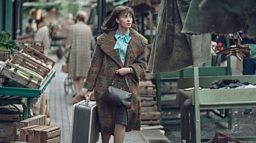
How did the TV adaptation come about?
Ridley Road was published in 2014 and named Book of the Month in Red magazine. As luck would have it, Sarah Solemani had written an article in the same issue. She read my novel and contacted me via Twitter. From the start I was bowled over by how articulate, passionate and politicised she was and with her clear vision for an adaptation. Sarah introduced the book to RED Productions, together they pitched the idea to the 大象传媒... and seven years later, here we are!

It has been worth the wait. Sarah's ideas have breathed new life into my story. She's made bold changes. Vivien, for example, has an expanded and exciting role as an infiltrator. Nettie, Vivien's landlady, has her own storyline, representing the old world with all the fears of a new world coming. Françoise Dior, the French fashion heiress who married fascist leader Colin Jordan makes an appearance. And Sarah works across a broader canvas than I did; she conflates timelines, inspired by events throughout the sixties. The result is a nail biting, classy and emotional thriller, beautifully written with flashes of Sarah's trademark wit.
I hope viewers love the show because it's a great piece of drama. But I also hope that they consider that with the current rise of the far-right, the increase in antisemitic and anti-immigration rhetoric, the story is still as relevant today, almost 50 years later, as it was then.
Fact or Fiction?
Are the characters in the 62 Group based on real life people?
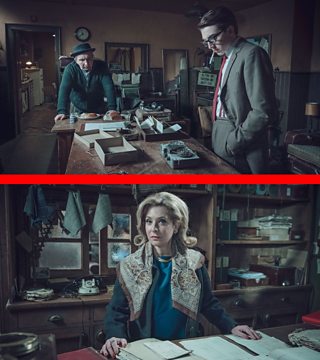
No. The real 62 Group comprised a few of the old 43 Group members, some from entertainment industry, cabbies and businessmen. Both in the book and the show, the characters are a general composite of those involved in the real group. There was no Soly, for example.
In real life, Harry Bidney, a former 43 Group member and ex-serviceman, was responsible for running a string of undercover agents into fascist organisations.
Rabbi Leher in the adaptation shares a similar background with the real Reverend Leslie Hardman. They both had been present at the liberation of the Belsen concentration camp.
But whereas the show portrays Rabbi Lehr as being much more actively involved with the group, Reverend Hardman was only the 62 group's chaplain. By some weird coincidence, I found that as the rabbi at Hendon Synagogue, he also married my parents in 1966!
Was Colin Jordan real?
Colin Jordan, the character in both the book and on screen was a key figure in post-war Neo-Nazism in Britain.
Early in 1962, Jordan and his colleague John Tyndall, split from the BNP after in-fighting over Jordan’s open Neo-Nazism and set up the National Socialist Movement. They took the BNP’s secret paramilitary army, Spearhead, with them. In the latter part of 1962, Jordan and some of his key personnel, were convicted of organising and equipping a paramilitary force for political ends.
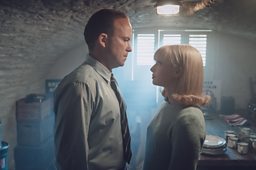
Was there really a female infiltrator in the 62 Group?
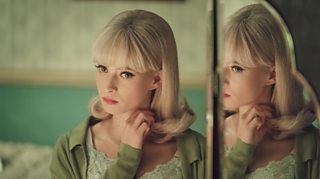
Not that has ever been made public, but there may well have been. I know of a romantically involved couple who infiltrated the far-right on behalf of the 43 Group.
Was the Trafalgar Square rally real?
Jordan’s National Socialist Movement and the rally they held in Trafalgar Square on 1 July 1962 under the banner 'Free Britain From Jewish Control' really did happen. Jordan gathered hundreds of people in support that day but many more opposed him. That meeting proved to be the catalyst that sparked Jewish anti-fascists into action and the following month they formed the 1962 Committee, or 62 Group, as it became known.
Did Jordan know George Lincoln Rockwell?
George Lincoln Rockwell, leader of the American Nazi Party and Colin did know each other and Rockwell travelled to the UK during this period. In the summer of 1962, Rockwell attended a weekend camp in Gloucestershire, where Nazis from around the world came together to form the World Union of National Socialists.
When did Colin Jordan and Françoise Dior marry?
Françoise Dior wasn't married to Colin Jordan in 1962 as depicted in the programme, but their 1963 Nazi marriage (where they held a blood ceremony and allowed their blood to drip onto the first page of Hitler's Mein Kampf) was highly publicised.
Did a young student really die in an attack in a Jewish theological college (Yeshiva)?
Yes. The 62 Group’s intelligence was used to help convict two groups of Nazi arsonists in 1965 and 1966 for attacking numerous Jewish properties. This work was recognised by the court when after one of the trials the judge asked for somebody from the Group to come forward to receive the court’s thanks, and intelligence officer Harry Bidney took the honours.
What happened to the 62 Group?
They went from strength to strength. Relying heavily on intelligence, they helped form the newly established intelligence gathering organisation, Searchlight. Together they hunted out individuals in the far right or infiltrated their own people into fascist organisations. The 62 Group faded from the scene in the late seventies.
-
![]()
Watch on iPlayer
Watch the entire series of Ridley Road on 大象传媒 iPlayer now.
